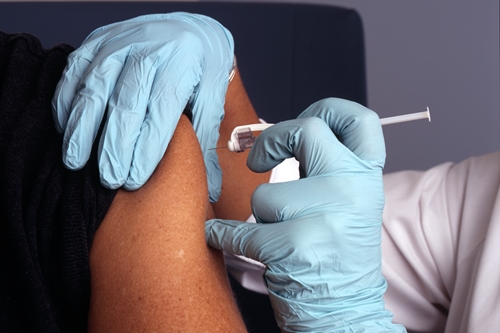1 December 2016. Vaccines against viral diseases today need to be kept refrigerated to prevent spoilage, which raises costs and often prevents their widespread use in many developing regions. A team of materials scientists at Ecole polytechnique fédérale de Lausanne in Switzerland, or EPFL, proposes methods for storing vaccines without refrigeration for many days, described in the 30 November 2016 issue of the journal Nature Communications.
Researchers from EPFL’s Supramolecular Nano-Materials and Interfaces Laboratory, or Sunmil, led by materials science professor Francesco Stellacci, are seeking solutions to problems encountered with storing and transporting vaccines, particularly their need for constant refrigeration, the so-called cold-chain. The optimum temperature for many vaccines is between 2 and 8 degrees Celsius, or 35 to 46 Fahrenheit, which must be maintained until given to recipients. The authors cite data showing as much as 80 percent of the cost of large-scale vaccination programs is traced to keeping vaccines refrigerated.
“These components fluctuate by their very nature,” says Stellacci in an EPFL statement. “They are combined in a stable form, and the low temperature maintains that balance. But the thermally induced fluctuations eventually lead to a loss of integrity of the viral vector.”
Stellacci and colleagues note that solutions for stabilizing anti-viral vaccines without refrigeration are already available, including freeze-drying or additives such as silk fibers, but these solutions either raise the cost of the vaccine, both production expense and additional steps to prepare before administration, or require further testing and approval by regulatory bodies.
In this study, the team focuses on low cost or readily available methods for preserving vaccine stability. One technique surrounds inactivated virus particles in the vaccine with negatively-charged nanoparticles of gold, in low concentrations to remain inexpensive. The negative charge on the nanoparticles counteracts the pressure from osmosis exerted on the virus’s protein shell by DNA or RNA, which helps stabilize the vaccine when not refrigerated.
Another technique adds polyethylene glycol or PEG, a commonly used biocompatible polymer, also in nanoparticle form, which stiffens the viral protein shell. One drawback of PEG, however, is an immune reaction in many people caused by the material. Sugars, such as sucrose, are already added to freeze-dried vaccines as stabilizers. In this study, the researchers add sucrose at a medium level of viscosity to stabilize viral vaccines. “It’s a little like adding honey,” notes Stellacci, “where all motion is slowed down.”
In lab cultures with fluorescent proteins, the researchers found these additives could extend vaccine lifetimes at room temperatures from 20 to 70 days. The team also injected mice with a vaccine against Chikungunya, a disease-causing virus spread by mosquitoes mainly in tropical regions, but with recent cases also reported in Europe and the Americas. Results show these vaccines with PEG or sucrose stabilizers were still effective in generating antibodies in mice, after being stored for 10 days at 37 degrees Celsius, or 98.6 F.
The authors believe these techniques can be applied to new vaccines using genetically engineered viruses now in development, as well as vaccine therapies and gene therapies delivered with viruses.
Read more:
- Zika Vaccine Clinical Trial Underway
- Biotech, Univ of Miami Spin-Off Vaccine Company
- Funds Provided for Developing RNA-Based Zika Vaccine
- PhRMA: 258 Vaccines in Clinical Development
- Molecular Express, Baylor Medicine Partner on Vaccines
* * *


 RSS - Posts
RSS - Posts
You must be logged in to post a comment.